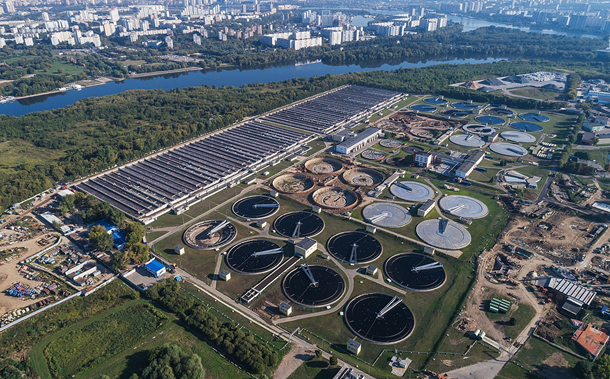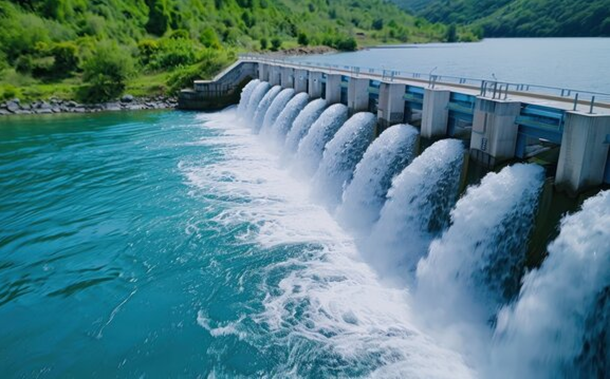Greywater Flow Characteristics for Closed Channel Maintenance
Downloads
Doi:10.28991/CEJ-2023-09-01-03
Full Text:PDF
Downloads
[2] Hu, M., Hu, H., Ye, Z., Tan, S., Yin, K., Chen, Z., ... & Hu, Z. T. (2022). A review on turning sewage sludge to value-added energy and materials via thermochemical conversion towards carbon neutrality. Journal of Cleaner Production, 134657. doi:10.1016/j.jclepro.2022.134657.
[3] Fu, T., Xu, C., Yang, L., Hou, S., & Xia, Q. (2022). Measurement and driving factors of grey water footprint efficiency in Yangtze River Basin. Science of the Total Environment, 802, 149587. doi:10.1016/j.scitotenv.2021.149587.
[4] Eriksson, E., Auffarth, K., Henze, M., & Ledin, A. (2002). Characteristics of grey wastewater. Urban Water, 4(1), 85–104. doi:10.1016/S1462-0758(01)00064-4.
[5] Arifin, S. N. H., Radin Mohamed, R. M. S., Ismail, N. R., Al-Gheethi, A., & Bakar, S. A. (2020). Effects of direct discharge of domestic greywater to nearby water body. Materials Today: Proceedings, 31, A126–A136. doi:10.1016/j.matpr.2021.01.038.
[6] Dwumfour-Asare, B., Nyarko, K. B., Essandoh, H. M. K., & Awuah, E. (2020). Domestic greywater flows and pollutant loads: A neighbourhood study within a university campus in Ghana. Scientific African, 9, 489. doi:10.1016/j.sciaf.2020.e00489.
[7] Shaikh, I. N., & Ahammed, M. M. (2020). Quantity and quality characteristics of greywater: A review. Journal of Environmental Management, 261, 110266. doi:10.1016/j.jenvman.2020.110266.
[8] Khotimah, S. N., Anisa Mardhotillah, N., Arifaini, N., & Sumiharni. (2021). Karakterisasi Limbah Cair Greywater pada level Rumah Tangga Berdasarkan Sumber Emisi. Jurnal Saintis, 21(02), 71–78. doi:10.25299/saintis.2021.vol21(02).7876. (In Indonesian).
[9] Pambudi, Y. S., Sudaryantiningsih, C., & Geraldita, G. (2021). Analisis Karakteristik Air Limbah Industri Tahu dan Alternatif Proses Pengolahannya Berdasarkan Prinsip-Prinsip Teknologi Tepat Guna. Syntax Literate; Jurnal Ilmiah Indonesia, 6(8), 4180-4192. (In Indonesian).
[10] Suryo Purnomo, Y., & Wijayanti, F. D. (2021). Pengolahan Limbah Cair Bengkel Dengan Menggunakan Grease Trap Dan Fitoremediasi. EnviroUS, 2(1), 114–122. doi:10.33005/envirous.v2i1.87. (In Indonesian).
[11] Nurhidayanti, N., Ilyas, N. I., & Lazuardini, D. P. (2022). Studi Pengolahan Limbah Cair Laundry menggunakan Serbuk Biji Asam Jawa sebagai Biokoagulan. Jurnal Tekno Insentif, 16(1), 16–27. doi:10.36787/jti.v16i1.453. (In Indonesian).
[12] Ota, J. J., & Perrusquía, G. S. (2013). Particle velocity and sediment transport at the limit of deposition in sewers. Water Science and Technology, 67(5), 959–967. doi:10.2166/wst.2013.646.
[13] Banasiak, R. (2008). Hydraulic performance of sewer pipes with deposited sediments. Water Science and Technology, 57(11), 1743–1748. doi:10.2166/wst.2008.287.
[14] Nursiani, T., Putra, Y. S., & Muhardi, M. (2020). Studi Ukuran Diameter Butir Sedimen Dasar terhadap Kecepatan Arus di Sungai Pawan Kabupaten Ketapang. Prisma Fisika, 8(1), 17. doi:10.26418/pf.v8i1.39868. (In Indonesian).
[15] Lahlou, F. Z., Mackey, H. R., & Al-Ansari, T. (2022). Role of wastewater in achieving carbon and water neutral agricultural production. Journal of Cleaner Production, 130706. doi:10.1016/j.jclepro.2022.130706.
[16] Kim, C., Lee, M., & Han, C. (2008). Hydraulic transport of sand-water mixtures in pipelines Part I. Experiment. Journal of Mechanical Science and Technology, 22(12), 2534–2541. doi:10.1007/s12206-008-0811-0.
[17] Zhu, Y., Hu, D., Li, C., Zhuang, C., & Yang, G. (2021). CFD-DEM simulation of the hydrodynamic filtration performance in balaenid whale filter feeding. Science of The Total Environment, 787, 147696. doi:10.1016/j.scitotenv.2021.147696.
[18] Bachrun, R., Pallu, M. S., Thaha, M. A., & Bakri, B. (2020). Effect of water discharge variation on water levels and flow characteristics in pipeline networks. IOP Conference Series: Earth and Environmental Science, 419(1), 12134. doi:10.1088/1755-1315/419/1/012134.
[19] Bachrun, R., Pallu, M. S., Thaha, M. A., & Bakri, B. (2021). The effect of discharge on head loss with straight and bend flow directions in the pipeline. IOP Conference Series: Earth and Environmental Science, 841(1), 12017. doi:10.1088/1755-1315/841/1/012017.
[20] Montes, C., Kapelan, Z., & Saldarriaga, J. (2021). Predicting non-deposition sediment transport in sewer pipes using Random forest. Water Research, 189, 116639. doi:10.1016/j.watres.2020.116639.
[21] Triatmodjo, B. (1996). Hydraulics I. Beta Offset, Yogyakarta, Indonesia. (In Indonesian).
[22] Xianbei, H., Qiang, G., Tao, F., Xurui, C., & Baoyun, Q. (2022). Air-entrainment in hydraulic intakes with a vertical pipe: The mechanism and influence of pipe offset. International Journal of Multiphase Flow, 146, 103866. doi:10.1016/j.ijmultiphaseflow.2021.103866.
[23] Nosrati, K., Tahershamsi, A., & Seyed Taheri, S. H. (2017). Numerical Analysis of Energy Loss Coefficient in Pipe Contraction Using ANSYS CFX Software. Civil Engineering Journal, 3(4), 288–300. doi:10.28991/cej-2017-00000091.
[24] Kumar, U., Mishra, R., Singh, S. N., & Seshadri, V. (2003). Effect of particle gradation on flow characteristics of ash disposal pipelines. Powder Technology, 132(1), 39–51. doi:10.1016/S0032-5910(03)00045-7.
[25] Ting, X., Xinzhuo, Z., Miedema, S. A., & Xiuhan, C. (2019). Study of the characteristics of the flow regimes and dynamics of coarse particles in pipeline transportation. Powder Technology, 347, 148–158. doi:10.1016/j.powtec.2019.02.031.
[26] Vlasak, P., & Chara, Z. (2011). Effect of particle size distribution and concentration on flow behavior of dense slurries. Particulate Science and Technology, 29(1), 53–65. doi:10.1080/02726351.2010.508509.
[27] Bachrun, R., Pallu, M. S., Thaha, M. A., & Bakri, B. (2021). Experimental study on characteristic of slurry flow regime in pipeline. International Journal of Engineering Trends and Technology, 69(7), 69–75. doi:10.14445/22315381/IJETT-V69I7P210.
[28] Liu, H. (2003). Pipeline Engineering. Lewis Publishers, Boca Raton, United States. doi:10.1201/9780203506684.
- Authors retain all copyrights. It is noticeable that authors will not be forced to sign any copyright transfer agreements.
- This work (including HTML and PDF Files) is licensed under a Creative Commons Attribution 4.0 International License.![]()















